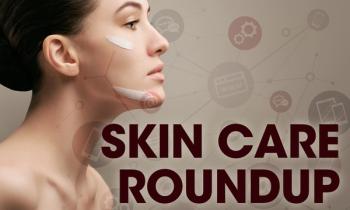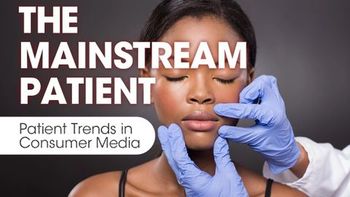
- Dermatology Times, January 2022 (Vol. 43. No. 1)
- Volume 43
- Issue 1
Understanding Cosmetic Claims
In this month's Cosmetic Conundrums, Zoe Diana Draelos, MD, an adjunct assistant professor of dermatology at Duke University School of Medicine in Durham, North Carolina, and chief medical editor of Dermatology Times®, tackles cosmetic box claims and what exactly 'sensitive skin' means in the cosmetic world.
Q What does it mean when advertising says: “98% of users agreed product X reduced the appearance of wrinkles in 48 hours”?
Ninety-eight percent agreement that product X “reduced the appearance of wrinkles in 48 hours” is an amazing claim, given that 98% of people may not agree the sky is blue. How exactly are these extraordinary claims constructed and supported? Through a statistical manipulation known as the top box/bottom box analysis.
Top box/bottom box is a commonly used analytical technique when constructing agreement or disagreement claims. The technique involves crafting a number of statements that represent the desired claim. For example, in this case, the statement might read: “The product reduced the appearance of my wrinkles in 48 hours.” The subjects are then presented with a 9-point scale over which to grade their agreement or disagreement with the statement, with 1 representing “strongly agree” and 9 representing “strongly disagree.” The top box is defined as a rating of 1, 2, or 3 representing agreement. The middle box is defined as a rating of 4, 5, or 6 representing “neither agree or disagree,”and the bottom box is defined as a rating of 7, 8, or 9 representing disagreement. The number of subjects who rated the statement a 1, 2, or 3 is determined as a percentage of all subjects who responded to the statement and the claim is supported. In this case, it was 98%.
Does this claim mean that the wrinkles were gone? No. The claim states that the appearance of wrinkles was reduced, not that the wrinkle was somehow physically modified. Basically, the subjects thought the wrinkles looked better. How much better? This is unknown. We only know that in their opinion, the wrinkles were reduced. What constitutes reduction? This is opinion only. Why does this refer to the appearance reduction at 48 hours? This is because the question was asked of the subjects 48 hours after product application.
In summary, what exactly does this claim mean from a dermatologic perspective? Nothing. We know that in the opinion of the subjects who participated in this consumer questionnaire, their wrinkles were reduced 48 hours after applying the product. We do not know how the participants were selected. We do not know what they were told or paid to take the questionnaire. We do not know how frequently they applied the product and for how long. We do not know what other variables might have influenced their evaluation. These claims are very powerful in the marketing world and grab my attention, even as a dermatologist. However, dermatologists must remove themselves from the consumer world and enter the medical world to understand the meaning of top box/bottom box substantiated claims.
Q What does the claim “appropriate for sensitive skin”imply medically?
“Sensitive skin” is an important claim for dermatologists, as most of the patients we treat in the office by definition have sensitive skin because they have skin disease. Most skin disease is characterized by barrier dysfunction to a greater or lesser degree, and restoring the skin to health requires improving the skin barrier. Can dermatologists therefore assume that products labeled “appropriate for sensitive skin” can be recommended to their patients without concern? No.
What does “sensitive skin” mean? Nothing. Sensitive skin is a term that defies medical definition. It is purely marketing jargon that means something to consumers looking to purchase skin-care products from a crowded shelf. This becomes apparent when you understand how sensitive-skin testing panels are constructed.
Most companies perform human repeat insult patch testing (HRIPT) on their products prior to sale to be sure there are no contact dermatitis problems. This test is conducted by placing a patch containing the test product on the backs of volunteers, usually recruited from college campuses, who would like to earn some extra money. The patches are changed 3 times weekly for around 3 weeks, and any reaction to the product is recorded. The problem is that most of the volunteers are young and healthy, without skin disease. As you might imagine, over the time the people who have problems with the patches no longer volunteer, you select for HRIPT participants who have robust unreactive skin. Some companies use their HRIPT testing to substantiate sensitive skin claims. Although this type of testing is valuable to detect problems, you cannot necessarily say the product is appropriate for sensitive skin when it was not tested in sensitive skin.
Another way of substantiating sensitive-skin claims is to recruit subjects with self-perceived sensitive skin. What does this mean? This means you ask recruits if they have “sensitive skin,” and if they say yes, you enroll them in your sensitive-skin panel and ask them to use your product and provide feedback. Although this type of questioning may produce a good panel for evaluating the marketing agreement/disagreement statements discussed previously, it will not produce a dermatologically relevant panel for true sensitive-skin testing. In my opinion, sensitive-skin products must be tested on subjects with eczema, atopic dermatitis, rosacea, psoriasis, and frequent irritant contact dermatitis.In other words, sensitive-skin testing should be performed on the population to whom the dermatologist will recommend these products. Fortunately, there is now interest in this type of more rigorous testing, and many companies are stepping up to the challenge. In the future, the wording appropriate for sensitive skin may have more medical meaning.
Articles in this issue
almost 4 years ago
HIPAA Violation, COVID-19 and the Lawsuitalmost 4 years ago
2022 Game Changers: Watch-worthy Drugs, Devices, and Technologyalmost 4 years ago
Digital Device Aids Skin Cancer Diagnosticsalmost 4 years ago
Impact of Itch Sparks New Pipeline Directionalmost 4 years ago
Top 20 Trending Stories of 2021almost 4 years ago
Lasers Shine New Light on Acne Therapyalmost 4 years ago
New Drugs, Devices Could Revolutionize Pigmentary Treatmentabout 4 years ago
Identifying Clinical Manifestations of Plaque Psoriasisabout 4 years ago
The Role of Emollients and Moisturizers in EczemaNewsletter
Like what you’re reading? Subscribe to Dermatology Times for weekly updates on therapies, innovations, and real-world practice tips.















